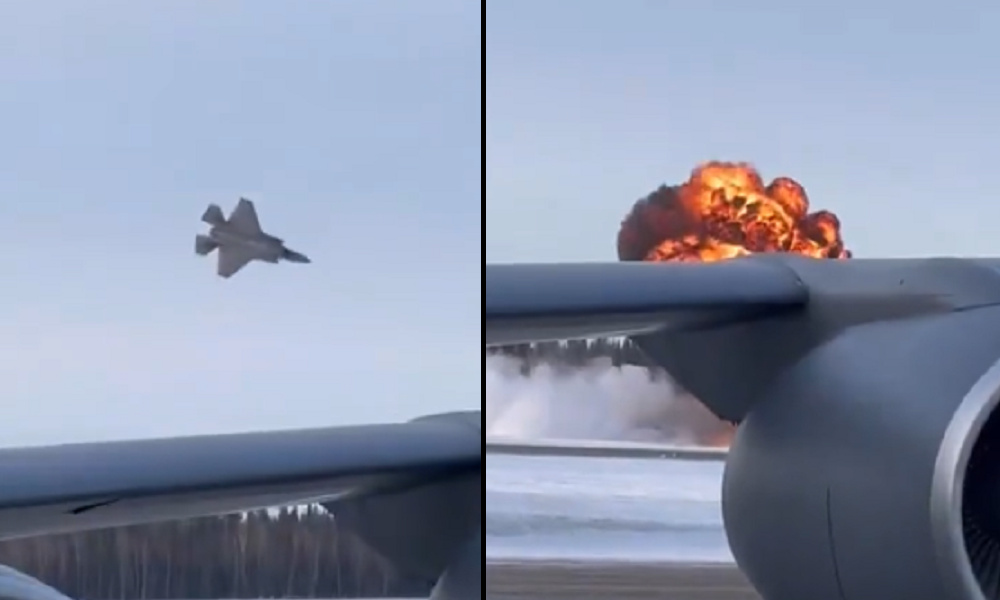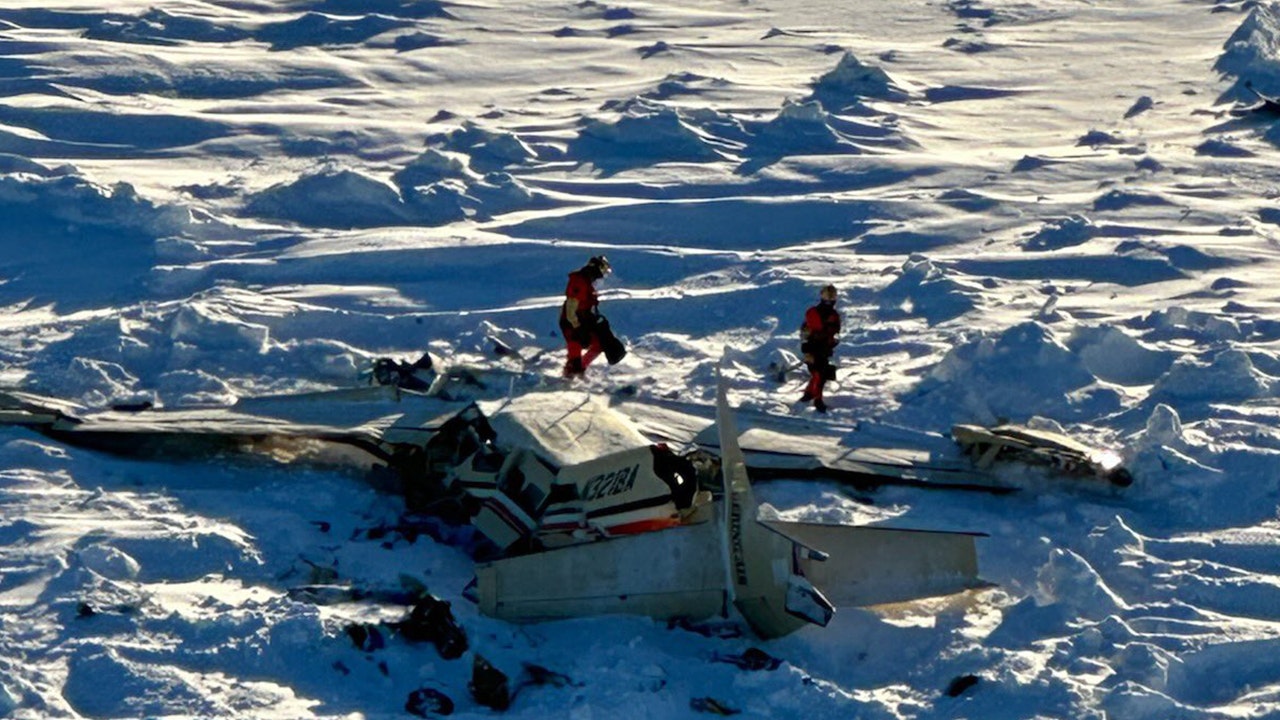Alaska Aviation Incidents: Details On Recent U.S. Crashes
Is the sky truly the limit for aviation safety in the United States? Recent events paint a concerning picture, with a series of aircraft incidents raising serious questions about the state of air travel and the safety protocols in place.
Anchorage, Alaska, has become a focal point for these mounting concerns. A U.S. Air Force fighter jet crashed in Fairbanks, Alaska, on a Tuesday afternoon, adding to a string of aviation mishaps that have gripped the nation. The incident, which occurred within the base's fenced perimeter, resulted in significant aircraft damage, underscoring the inherent risks associated with even the most technologically advanced machinery. While the pilot fortunately emerged unharmed, the incident serves as a stark reminder of the potential for disaster that looms large in the skies.
This latest incident in Fairbanks is not an isolated event. The Alaska plane's crash marks the third major U.S. aviation mishap in a mere eight days. The cumulative effect of these incidents, coupled with the ongoing investigations, is creating an atmosphere of unease, prompting many to question the underlying causes and the measures being taken to prevent future tragedies.
- Vijay Varmas Past Marriage Unveiling The Mystery Of His First Wife
- Is Amy Shira Teitel Single Exploring The Life And Relationship Status Of This Renowned Space Historian
The incident occurred at 12:49 p.m., within the base's fenced perimeter, resulting in significant aircraft damage. While the pilot was safe, this event adds to the growing concerns.
The pilot, who experienced an "inflight" issue, was transported to Bassett Army Hospital for further evaluation. The specific nature of the issue remains undisclosed as investigations commence. Airman 1st Class Spencer Hanson confirmed the pilot was uninjured.
Another tragic chapter unfolded on the Kenai Peninsula, where a small commercial aircraft met with disaster on Monday afternoon. Alaska State Troopers confirmed that the crash claimed the lives of the pilot and a passenger, while a second passenger sustained serious injuries. The Department of Public Safety identified the deceased as Pilot Daniel Bunker, 48, from Homer, and Jenny Irene Miller, 37, from Anchorage. Officials are currently investigating the cause of the crash.
- Discover The Best Autumn Nail Polish Colors For 2023
- Sophie Raine Fans A Deep Dive Into The Growing Community
The escalating pattern of aviation incidents raises the question of whether the current safety protocols and regulations are adequate or need urgent revision. As the investigations into these incidents progress, the aviation community and the public are anxiously awaiting answers.
The aircraft incident occurred on Tuesday afternoon at the base. The jet is estimated to cost around $80 million. (Andrej Tarfila/Sopa Images/Lightrocket via Getty Images)
Beyond these recent incidents, a plane carrying 10 people that went missing in rural Alaska on Thursday during inclement weather appears to be the third deadly aviation disaster in the United States in just two weeks. This series of events have shaken the aviation landscape.
The Alaska Rescue Coordination Center, according to a press release, discovered the downed plane on the lake and immediately alerted the Alaska State Troopers. The incident is under investigation, however the ongoing pattern of mishaps is causing major concerns among the public and the authorities.
This pattern of accidents goes beyond the state of Alaska. A commercial jetliner and an army helicopter collided near the nations capital in January, illustrating the dangers of aviation. The circumstances surrounding these accidents are still being examined, with questions of maintenance, pilot training, and air traffic control procedures are examined. This is crucial to address in order to reduce the risk of future tragedies.
In a similar vein, a medical transportation plane crashed in Philadelphia on January 31, resulting in the loss of six lives on board and another on the ground. This highlights the wide-reaching impact of such disasters, as well as the necessity of rigorous safety protocols.
Authorities are still investigating what caused a small commuter plane to crash over Alaska last week, killing all ten people on board. Joel Natwick, a longtime pilot in the state, provided insight into the complexities of flying in Alaska, where weather conditions and vast distances can contribute to challenging circumstances.
The 10 Alaskans killed in the crash near Nome included a mentor to new teachers, a school counselor, and two Alaska Native Tribal Health Consortium employees on their way to service a local water plant. The impact of these disasters stretches beyond the immediate victims, affecting families, friends, and communities.
The pilot was taken to Bassett Army Hospital for observation. This highlights the efforts made by authorities to ensure the safety of the individuals involved in the accidents, and to examine the underlying causes of the incidents.
The coast guard said radar data showed that around that same time, the plane experienced some kind of event that caused rapid loss in elevation and speed. The 10 victims ranged in age from 30 to 58 and were all Alaska residents. This shows how widespread the loss of life can be as a result of a single aviation mishap.
The string of incidents necessitates a thorough review of all elements of aviation safety, from pilot training to aircraft maintenance and air traffic control. The outcomes of the inquiries, along with any suggestions for improvements, will be critical in shaping the future of aviation safety.
The recent incidents demand a comprehensive response. The safety protocols and regulations require critical evaluation and updating to avoid further tragedies. The ongoing investigations and recommendations for improvements will be very critical in the future of aviation safety.
The string of aviation mishaps in recent weeks has triggered a wave of concern, forcing the aviation industry and regulatory agencies to examine safety protocols and identify potential areas for improvement.
Overview of Recent Aviation Incidents:
| Date | Location | Type of Aircraft | Incident | Casualties | Notes |
|---|---|---|---|---|---|
| Recent Weeks | Fairbanks, Alaska | U.S. Air Force Fighter Jet | Crashed within base perimeter | Pilot Safe | Aircraft damage, cause under investigation |
| Monday Afternoon | Kenai Peninsula, Alaska | Small Commercial Aircraft | Crash | 2 fatalities, 1 seriously injured | Pilot Daniel Bunker, 48, and Jenny Irene Miller, 37, confirmed dead |
| January | Near Nation's Capital | Commercial Jetliner & Army Helicopter | Collision | Details still under investigation | Cause is under investigation |
| January 31 | Philadelphia | Medical Transportation Plane | Crash | 6 fatalities, 1 on ground | Details are still under investigation |
| Thursday | Rural Alaska | Small Commuter Plane | Missing, presumed crashed | 10 fatalities | Bad weather contributed to the crash |
Key Considerations for Aviation Safety:
The rash of incidents underscores the importance of these considerations:
- Pilot Training and Experience: Ensuring pilots possess the necessary skills and experience to navigate challenging situations and adverse weather conditions.
- Aircraft Maintenance: Regular inspections and maintenance of aircraft to prevent mechanical failures.
- Air Traffic Control: Effective communication and coordination between air traffic controllers and pilots to prevent mid-air collisions and ensure safe flight paths.
- Weather Monitoring: Accurate weather forecasting and real-time monitoring to identify and avoid hazardous conditions.
- Safety Regulations: The need for thorough and regularly updated safety regulations to reflect advancements in technology and address emerging risks.
- Investigation and Reporting: Prompt and thorough investigations of all incidents, coupled with transparent reporting of findings to prevent future accidents.
These incidents are a stark reminder of the potential dangers in the skies, but they also represent a chance to enhance safety and prevent future losses. The answers will be critical in improving the safety of air travel for all. The aviation industry, regulatory agencies, and the public all have a role in ensuring a safe and secure future for air travel.
The Role of Investigation and Transparency
Thorough investigations into the causes of the recent incidents are crucial. These inquiries must delve into all aspects of the accidents, from mechanical failures and pilot error to weather conditions and air traffic control procedures. The public demands transparency in the findings, which will help the industry learn from these tragedies and implement effective preventative measures.
Community Impact and Support
The recent aviation disasters have deeply affected local communities. Victims, families, friends, and colleagues must be supported during this difficult time. The ripple effects of such tragedies can be felt far and wide, highlighting the need for emotional and practical assistance for those who have suffered loss.
The Future of Aviation Safety
The aviation industry must utilize these events to improve safety measures. This includes enhancing pilot training, modernizing aircraft maintenance procedures, and upgrading air traffic control systems. Collaboration between industry stakeholders, regulatory bodies, and the public is crucial to ensure the safety of air travel. The goal must be to build a culture of safety that prioritizes continuous improvement and risk reduction.
The Call for Action
The recent tragedies are a call to action for all stakeholders in the aviation industry. The focus must be on prevention, by identifying and addressing potential hazards before they lead to disaster. This requires a commitment to safety, a willingness to invest in new technologies and procedures, and a dedication to transparency and accountability.
Aviation Safety: A Shared Responsibility
Aviation safety is a shared responsibility, involving the government, airlines, airports, air traffic control, and the public. Every stakeholder must fulfill its duty to enhance the safety of air travel. Collaboration, open communication, and a dedication to excellence can build a future where aviation is not only a means of transportation but also a symbol of security and trust.
Conclusion
The recent aviation incidents serve as a wake-up call for the industry. It has to address concerns regarding safety protocols and prevent future tragedies. The lessons learned from these disasters, coupled with ongoing investigations and recommendations for improvement, will play a pivotal role in enhancing the safety of air travel. This includes pilot training and aircraft maintenance to effective air traffic control, with an ongoing commitment to transparency, and innovation. The aviation community and regulatory bodies have an obligation to ensure a safer and more reliable flying experience for all.


Detail Author:
- Name : Jade Corkery Jr.
- Username : kuhn.bernadine
- Email : swintheiser@kreiger.com
- Birthdate : 1993-12-30
- Address : 97224 Saul Terrace Runolfssonview, SC 57180-1553
- Phone : +1 (248) 524-2345
- Company : Thompson-Olson
- Job : Sawing Machine Tool Setter
- Bio : Tenetur fuga dolore ex eveniet. Quibusdam aliquid modi voluptas officiis possimus.
Socials
linkedin:
- url : https://linkedin.com/in/lauriane_muller
- username : lauriane_muller
- bio : Quo laborum sed suscipit sit nihil provident.
- followers : 2828
- following : 2257
twitter:
- url : https://twitter.com/lauriane4480
- username : lauriane4480
- bio : Dignissimos repudiandae doloremque est facere similique veritatis. Sequi quam et voluptatum. Quia sit expedita quia quisquam.
- followers : 3879
- following : 1183